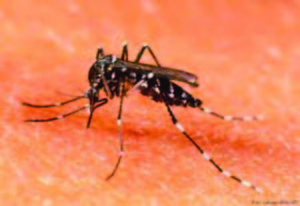AHMEDABAD/BENGALURU, DEC 16
Gujarat tops the list of total dengue cases at 16,565, out of which schoolchildren are the most hit, while Karnataka is close behind with 15,929 cases reported from January till December 7, this year. A recent study published by researchers from Ahmedabad-based BJ Medical College of 6,434 dengue cases between 2010 and 2016 have shown how schoolchildren in the 5 to 14 years of age have been the most vulnerable to the deadly disease.

In 2019, of the total 4,195 dengue cases registered till December 1 in Ahmedabad, a significant number of patients were in the 9 to 14 years age group followed by the 5 to 8 years.
According to data from the National Vector Borne Disease Control Programme (NVBDCP) under the Union Ministry’s Directorate General of Health Services, Karnataka had reported 15,232 from January till November this year and Gujarat followed with 14,835 cases in this period.
“The numbers in these two States are fluctuating with minor changes in the last two weeks. But it is a fact that these two States are endemic for dengue this year,” said a senior official from NVBDCP.
The number of dengue cases in Karnataka has gone up from 3,358 in 2014 to 17,265 in 2017. In 2017, Karnataka was behind Tamil Nadu and Kerala that reported 23,294 and 19,973 dengue cases, respectively. Karnataka reported 4,427 cases in 2018.

According to Karnataka’s Health Department data, there has been more than a four-fold rise in dengue incidence this year compared to last year. Till December 11 this year, 16,020 cases and were reported and 8,985 of these cases are from BBMP areas.
In 2017, the vector-borne disease had spread at an alarming rate and there was a significant surge in number of cases in Karnataka. Concerned over the spread, a team of experts from the Union Health Ministry visited the State to assess the situation. While State Health officials claimed that the situation is not alarming so far and the number of cases are on the decline in the last one month, hospitals are continuing to report a considerable number of cases.
According to experts in vector borne disease control programme, the transmission of dengue is governed by various ecological factors. This coupled with unplanned developmental activities, improper water storage, migration and improper solid waste management also play a crucial role in the upsurge of dengue cases.
Although dengue was earlier associated with monsoon, it has now become a self-limiting viral fever which is prevalent all through the year. The dengue-causing Aedes aegypti mosquito breeds in freshwater and bites during the day.
Ahmedabad civic authorities need to intensify dengue drive
The indication of children up to 15 years being most vulnerable to dengue was being predicted since 2010 and yet schools, homes and even municipal authorities in public areas are either yet to take proactive steps or intensify the drive against Aedes aegypti mosquito.
A recent study published by researchers from BJ Medical College of 6,434 dengue cases between 2010 and 2016 have shown how schoolchildren in the 5 to 14 years of age have been the most vulnerable to the deadly disease. This observation has matched with the latest January to December data this year for dengue patients in Ahmedabad city which also showed that nearly 41 per cent of those affected by dengue were of the 5 to 14 age group.
The BJ Medical College researches in community medicine found that schoolchildren had the highest incident rate of 26.2 cases within lakh population. In fact, this age bracket also had the highest fatality rate too. The overall incidence of dengue was 16.3 per one lakh population. The maximum incidence was seen in children up to 14 years followed by youngsters in the 15-44 years age group, where researchers found an incidence rate of 17.3 per lakh population. The proportion of deaths was maximum — 57.9% — in children up to the age of 14 years followed by 15 to 44 years age group in which the proportion of deaths was 36.84%. The incidence of dengue among males was higher than females. The study was conducted by Shikha Jain and Grishma Dixit of Community Medicine Department at BJ Medical College and former AMC entomologist Vijay Kohli.










